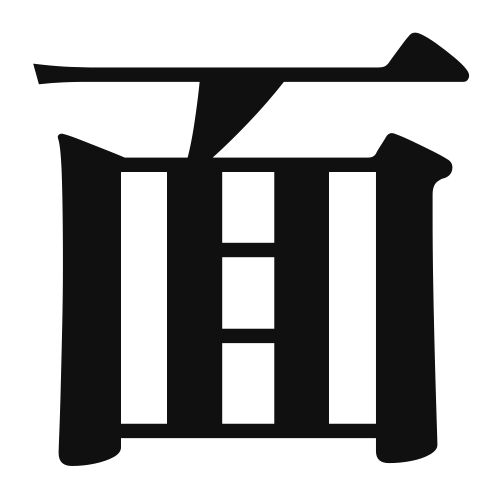1. Overview of Meaning
The kanji “面” (men) primarily means “face” or “surface.” It can refer to the front part of something, such as a person’s face, or the surface of an object. Additionally, it can denote aspects or facets of a situation or concept.
2. Formation and Radical
Formation of the Kanji: The kanji “面” is classified as a compound ideograph (会意文字), which combines different elements to convey a specific meaning. It visually represents a face or surface, with the top part resembling a forehead and the bottom part suggesting a chin.
Radical: The radical for “面” is 面 (men), which is also used in other kanji related to faces or surfaces.
3. Examples of Usage
Common Words and Phrases: Some frequently used words that include “面” are:
- 面白い (omoshiroi) – interesting
- 面接 (mensetsu) – interview
- 表面 (hyōmen) – surface
Example Sentences in Daily Conversation:
- 彼の顔はとても面白いです。(Kare no kao wa totemo omoshiroi desu.) – His face is very interesting.
- 面接の準備をしなければなりません。(Mensetsu no junbi o shinakereba narimasen.) – I have to prepare for the interview.
4. Synonyms and Antonyms
Similar Kanji: A similar kanji is “顔” (kao), which also means “face” but is more specific to the human face rather than the broader concept of “面.”
Antonyms: An antonym for “面” could be “裏” (ura), which means “back” or “reverse,” indicating the opposite side of a surface.
5. Cultural and Historical Background
Relation to Japanese Culture: The concept of “面” is significant in Japanese culture, especially in traditional arts such as Noh theater, where masks (面) are used to represent different characters and emotions.
Proverbs and Idioms: One common idiom is “面目を失う” (menboku o ushinau), which means “to lose face,” referring to a loss of dignity or reputation.
